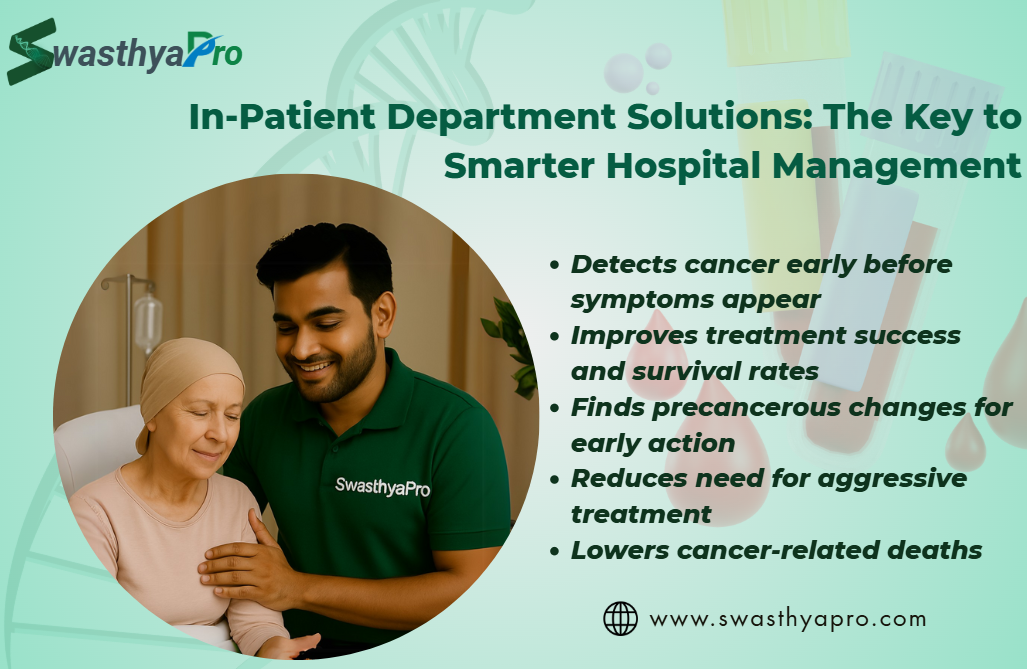In-Patient Department Solutions: The Key to Smarter Hospital Management

Hospitals around the world are under pressure to deliver quality care while managing increasing patient loads, complex treatments, and rising operational costs. In this challenging landscape, In-Patient Department Solutions are emerging as a vital tool for hospitals to manage resources effectively, reduce errors, and provide better patient experiences. By combining technology with streamlined workflows, these solutions are transforming how inpatient care is delivered and managed.
The Need for In-Patient Department Solutions
The inpatient department (IPD) is one of the busiest and most resource-intensive areas in any hospital. It involves patient admissions, bed allocations, treatment coordination, monitoring, and discharge planning. Without a well-structured system, these processes can quickly become chaotic, leading to errors, delays, and patient dissatisfaction.
This is where In-Patient Department Solutions play a crucial role. They bring automation, transparency, and coordination into every step of the inpatient journey, ensuring hospitals operate more efficiently while delivering patient-centered care.
What Are In-Patient Department Solutions?
In-Patient Department Solutions are comprehensive digital platforms designed to manage the end-to-end functioning of inpatient care. These solutions integrate hospital operations such as admissions, electronic medical records, billing, staff scheduling, and discharge into a single, streamlined system.
They enable real-time updates, reduce paperwork, and connect multiple hospital departments to improve communication and coordination. In short, these solutions act as the backbone of smarter hospital management.
Key Features of In-Patient Department Solutions
-
Automated Admissions and Discharges
With In-Patient Department Solutions, patient onboarding becomes smooth and error-free. Insurance verification, documentation, and billing are handled digitally, reducing administrative delays. Similarly, discharges are processed faster, improving patient flow. -
Electronic Health Records (EHRs)
All patient information — from medical history to lab results — is stored in digital records accessible to doctors, nurses, and staff. This reduces duplication and ensures accurate, updated information at all times. -
Real-Time Bed Management
Bed allocation and availability are managed through digital dashboards, ensuring optimal resource use. Hospitals can quickly identify available beds and assign them without delays. -
Medication and Treatment Tracking
Automated alerts and reminders help reduce medication errors. Nurses and doctors can track treatments in real time, ensuring patients receive the right care at the right time. -
Billing and Cost Transparency
In-Patient Department Solutions integrate billing with patient records, ensuring accurate and transparent invoices. This improves trust and reduces disputes. -
Staff Scheduling
The solutions help hospitals optimize nurse and doctor schedules, balancing workloads and ensuring patients always have access to care.
Benefits of In-Patient Department Solutions
1. Reduced Errors
Manual processes often result in mistakes in data entry, prescriptions, or billing. In-Patient Department Solutions minimize these errors by automating processes and cross-verifying information.
2. Improved Patient Outcomes
Real-time monitoring, accurate treatment records, and seamless coordination among staff lead to better clinical outcomes and faster recovery for patients.
3. Enhanced Efficiency
From faster admissions to smoother discharges, every stage of the inpatient journey becomes more efficient. This reduces waiting times and improves patient satisfaction.
4. Cost-Effective Operations
Hospitals save costs by optimizing staff schedules, reducing wastage of medical supplies, and improving resource utilization through In-Patient Department Solutions.
5. Better Communication
Patients, families, and healthcare providers remain connected through digital portals. This transparency builds trust and strengthens the patient-provider relationship.
How In-Patient Department Solutions Transform Hospital Management
Hospital management often struggles with balancing patient care and operational demands. In-Patient Department Solutions make this balance possible by digitizing workflows and ensuring real-time visibility into all hospital operations.
For example, hospital administrators can track patient admissions, monitor bed occupancy, manage staff assignments, and oversee billing — all from a single platform. Doctors can instantly access patient histories, while nurses can receive automated medication reminders. Families can check treatment progress without waiting for updates.
This interconnected ecosystem ensures smoother operations and smarter hospital management.
Overcoming Challenges in Implementation
While the advantages are clear, adopting In-Patient Department Solutions is not without challenges. High initial investment, integration with legacy systems, and staff training are common hurdles. However, hospitals that invest in change management and phased implementation find the long-term benefits far outweigh the initial challenges.
The Future of In-Patient Department Solutions
Looking ahead, In-Patient Department Solutions will become even more advanced with the integration of artificial intelligence, predictive analytics, and IoT devices. These technologies will enable hospitals to forecast patient inflows, predict treatment outcomes, and manage resources with unprecedented accuracy.
For instance, AI-powered dashboards might predict which patients are at risk of complications, allowing doctors to intervene early. Wearable devices could feed real-time patient data directly into hospital systems, ensuring continuous monitoring.
Conclusion
In today’s fast-paced healthcare environment, hospitals can no longer rely on manual systems for managing inpatient departments. In-Patient Department Solutions are the key to smarter hospital management, reducing errors, improving efficiency, and enhancing patient care. By digitizing workflows and connecting departments, these solutions create a seamless ecosystem where patients feel supported, staff are empowered, and hospitals achieve operational excellence.
The future of hospital management lies in embracing these digital tools, and hospitals that act now will lead the way in delivering safe, efficient, and patient-centered care.
- Art
- Causes
- Best Offers
- Crafts
- Dance
- Drinks
- Film
- Fitness
- Food
- Jocuri
- Festival
- Gardening
- Health
- Home
- Literature
- Music
- Networking
- Alte
- Party
- Religion
- Shopping
- Sports
- Theater
- Wellness



